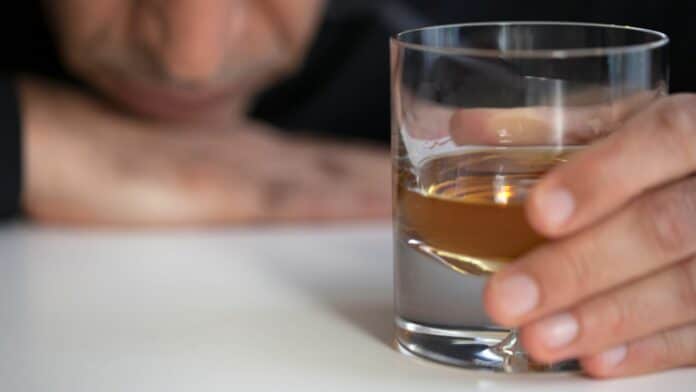Anxiolysis and happiness are two benefits of alcohol consumption that may play a significant role in developing and maintaining an alcohol use disorder (AUD). However, the mechanisms that lead from chromatin reorganization to transcriptomic changes after acute ethanol exposure remain unknown.
A new study by the University of Illinois- Chicago suggests that the pathways involved in priming the brain for addiction are the same ones associated with the highs of drinking.
The study on rodent models shows that even small amounts of alcohol can cause transcriptomic and epigenomic changes in brain circuitry, which are essential for the emergence of addiction. This suggests that when the brain experiences the anti-anxiety effects of alcohol and the mood lift — the relaxation and the buzz — it is also primed for alcohol use disorder.
Senior author Subhash Pandey, the Joseph A. Flaherty endowed professor of psychiatry and director of the Center for Alcohol Research in Epigenetics in the UIC College of Medicine, said, “The study does not suggest, for example, that one drink leads to addiction in humans, it does provide some clues as to why some people are more vulnerable to alcohol use disorder.”
“We’re seeing that dependent behaviors may not always be from long-term, high-quantity habits but a result of rapid epigenetic changes in the brain, which we show in this study may start happening even at low doses.”
For this study, scientists studied rats under control and alcohol exposure conditions. During experiments, the models were exposed to low concentrations of alcohol, and their behaviors were observed as they explored a maze. After that, the scientists used RNA sequencing to examine brain tissue samples obtained after euthanasia and searched for patterns in gene expression.
The analysis of the samples revealed that a gene called hypoxia-inducible factor 3 alpha subunit — Hif3a, for short — was associated with changes in the brain after alcohol exposure and behaviors, like how long rats stayed in areas of the maze with enclosed (high anxiety) or open arms (low anxiety).
Even after low exposure, alcohol boosted Hif3a expression and decreased anxiety. And although while there are differences in many alcohol effects between men and women, there was no difference between the two in this study.
Pandey said, “We saw that low doses, what we consider ‘social drinking,’ changes the gene expression in the amygdala, a brain region that regulates anxiety. In other words, it creates an epigenetic pathway for addiction.”
In follow-up experiments, they blocked the gene in the amygdala of rats with or without alcohol exposure to validate its role in mediating anxiety. In control rats, anxiety levels rose when Hif3a was blocked, simulating withdrawal effects from prolonged alcohol use. However, it also stopped alcohol’s anti-anxiety benefits from occurring.
Why this happened?
Hif3a’s chromatin — bundles of DNA and RNA — are loosely bundled, meaning the genes are easily accessible for transcription changes, explained scientists.
Pandey said, “One thing the study does not suggest, however, is what level of alcohol exposure was safe for rodents. Instead, it’s important to know that low doses created priming for addiction. For people, he thinks the takeaway is simple — don’t assume social drinking or even “pandemic drinking” is without risk.”
“Alcohol use disorder is complex and challenging to overcome. The information we learned from this study helps us better understand what is happening in the brain and, one day may be leveraged to develop better treatments and pharmaceuticals.”
Journal Reference:
- Krishnan, H.R., Zhang, H., Chen, Y. et al. Unraveling the epigenomic and transcriptomic interplay during alcohol-induced anxiolysis. Mol Psychiatry (2022). DOI: 10.1038/s41380-022-01732-2
